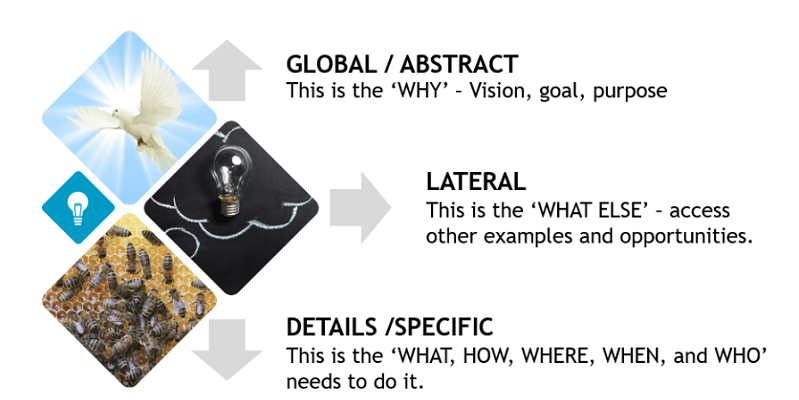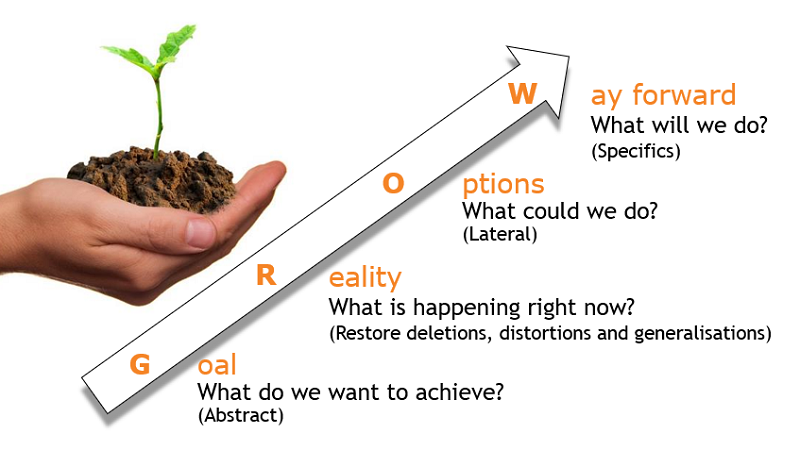Structure Conversations
Episode #8 of the course Confident conflict management by Martin Probst
Welcome back.
Yesterday, you learned why you should aim for “win-win” during conflict situations and what this actually means. Today, you will learn how to structure conversations and thus provide you with the confidence of a positive outcome.
The most important is to begin with the end in mind. Focus on what people involved in the conflict actually want to get out of the situation. In other words, focus on the big picture and what common goals there are. When people in a conflict situation realize that what they want is ultimately the same thing and that they have more in common than they realize, they will be willing to work things out. This is a great starting point to move forward.
“One good conversation can shift the direction of change forever.” —Linda Lambert
Let’s have a closer look at how you can achieve this.
Hierarchy of Ideas
The hierarchy of ideas describes how to master difficult conversations by controlling the flow of conversation or ideas from abstract to specific, and vice versa. Hierarchy of ideas (Chunking) is a fantastic concept to understand because many communication breakdowns are caused by mismatched “chunk sizes”. (For example, Luke may use smaller chunks than Jack. Therefore, Luke sees Jack as vague and confusing when he talks. Whereas Jack may see Luke as terribly boring and “caught up in detail”.)
Your success as a communicator comes down to your ability to think up, down, and across the communication ladder easily and effortlessly. The faster you can do this, the better you become at facilitating difficult conversations and turning dysfunctional situations into productive outcomes. Managing a difficult conversation becomes easier when you understand the power of this communication strategy.
It makes it rather easy to find an agreement when being able to “chunk-up” two people with different ideas. By leading them to the “why” (abstract), they will most likely quickly realize that they ultimately want the same thing (acknowledgment, recognition, etc.). Once an agreement (common goal) is reached, start to look at how the situation can be resolved by “chunking down” (specifics) and getting clear on the details. As soon as you notice negative emotions (frustration, anger, despair, etc.) creeping in from one or the other side, remind them of the common goal and “chunk across” (lateral) to explore other opportunities by asking what else could be done to resolve the situation. In other words, consider different options that are available to maintain the agreement. Once you reach the common ground again, it’s time to chunk down even more until a solution is found and both parties are clear on how to achieve the desired outcome.
GROW Model
To bring some valuable structure to the “chunk size filter” during a challenging conversation, you can apply the GROW model. This strategy is a four-step process that can be compared to planning a journey; establishing a goal (where you want to go) and determining your reality (where you currently are). Then it is about exploring the options (various routes), and the last step is about the way forward, in other words establishing the commitment to making the journey.
Below is the overview as well as a few practical questions you can utilize at each step:
Examples for G: How would you like this situation/issue to be? How will you know that you have achieved the goal?
Examples for R: What have you attempted to do so far to transform this situation? What results did you get?
Examples for O: What could you do if you had total certainty about the outcome? What could you do if you knew you could not fail?
Examples for W: Looking at your options, which action(s) stand out as being the action(s) that would bring you just one step closer to your outcome? When will you have completed these first action steps?
As I mentioned in the “Steps to resolving conflict” in Lesson 6, it is very important to follow up with all involved parties. If we do not hear back or don’t see the same conflict openly arise, is not necessarily an indication that everything is resolved, and people are happy. It is vital to maintain the conversation and build strong relationships for the future.
“Conversation means being able to disagree and still continue the discussion.” —Dwight Macdonald
My top tip for the day: As with everything else you do, reflection is a vital part of improving your conflict management skills. After the next difficult conversation, consider what went well, how you or the other person has reacted, and what you could have done differently to achieve an even better outcome.
Tomorrow, I will introduce you to the steps of how you can prevent conflict to minimize exposure to difficult conversations and sticky situations.
“Dare to make a difference!”
Martin
Recommended reading
Understanding And Using The Milton Model 1: The Hierarchy Of Ideas
Recommended book
Wisdom of Milton H Erickson: The Complete Volume by Ronald Havens
Share with friends



